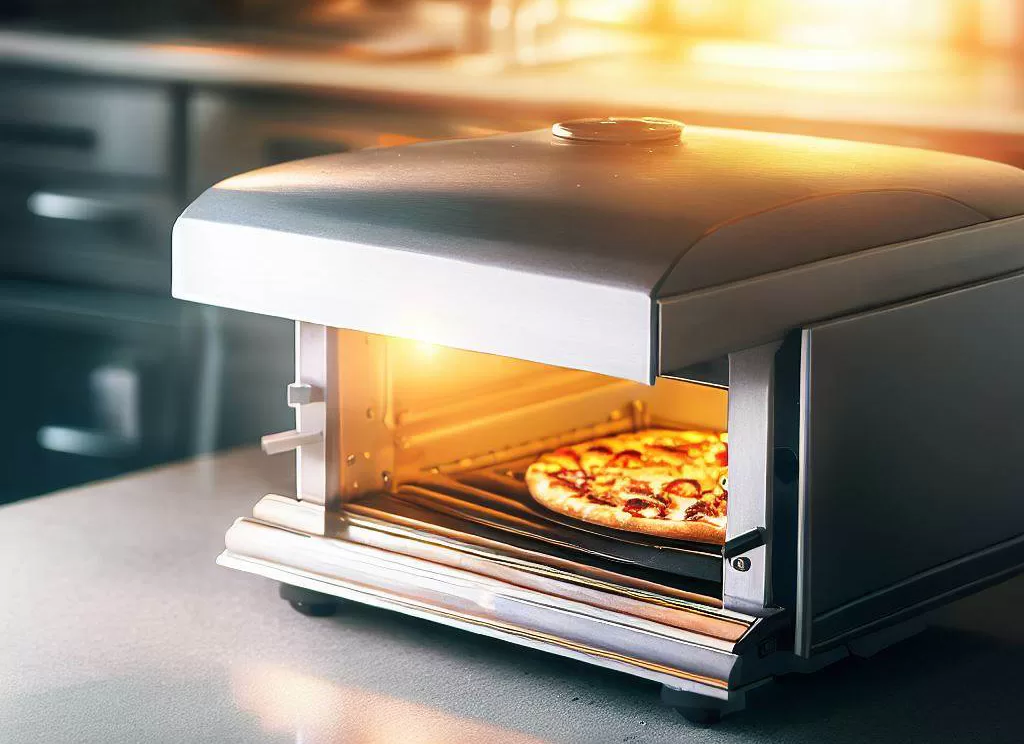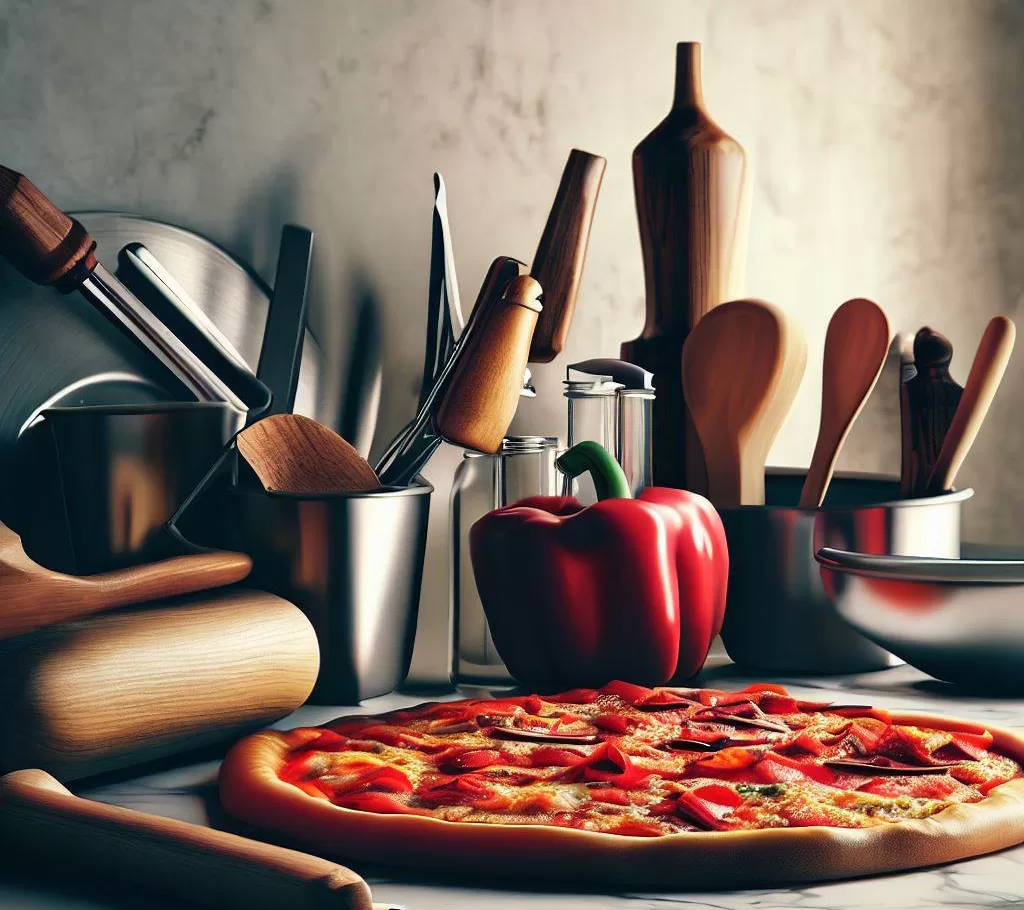Have you ever pondered the extent to which pizza ovens must be heated to attain that deliciously crispy crust and irresistibly gooey, molten cheese?
The key factor at play here is none other than the temperature itself.
Imagine a scenario: a delectable slice of pizza boasting a flawlessly crisp, gilded-brown crust that offers a delicate crumble as you sink your teeth into it.
Meanwhile, the cheese is precisely melted, resulting in those highly desirable cheese stretches that seem to pull endlessly.
Yet, the question lingers: What’s the strategy behind reaching this pinnacle of pizza perfection?
It’s not merely about the choice of ingredients or the selection of toppings—rather, it revolves around the all-important element of temperature.
Table of Contents
ToggleWhy 400°C is Often Termed as the ‘Golden Rule’ for Pizzas

When it comes to making the perfect pizza, temperature is more than just a number.
It’s the difference between a lackluster pizza and a masterpiece that delights the senses.
But why does 400°C hold such a special place in the hearts of pizza enthusiasts?
Historical Context
The roots of pizza trace back to ancient civilizations, where it was baked in humble wood-fired ovens.
These ovens, fueled by wood, would reach temperatures around 400°C.
This historical context is where the “golden rule” began. But the story doesn’t end there; let’s explore how this tradition has evolved over the years.
Scientific Breakdown
Ever heard of the Maillard reaction?
It’s the scientific magic that occurs when amino acids and reducing sugars interact under high temperatures, leading to the formation of those irresistible flavors and aromas.
When you bake a pizza at around 400°C, this reaction is in full swing, creating a crust that’s both crispy and flavorful.
Additionally, the sugars in the dough caramelize at this temperature, resulting in the enticing golden-brown color we associate with the perfect crust.
It’s like a symphony of flavors and textures playing out in your oven.
READ ALSO: Our list of top pizza ovens for commercial use.
A Deep Dive into Different Oven Types
Wood-fired Ovens
Imagine a traditional brick pizza oven, smoke billowing out as it reaches the scorching temperatures of 400°C.
This wood-fired method imparts a unique smoky flavor to the pizza, setting it apart from the conventional.
The temperature range, around 700-800 degrees Fahrenheit (370-425°C), allows for rapid cooking and that sought-after crispy texture.
Electric Ovens
In our modern world, electric ovens offer convenience and precision. They maintain a consistent temperature, ensuring even cooking.
However, achieving the scorching heat of a wood-fired oven can be a challenge, impacting the coveted Maillard reaction and caramelization.
Gas Ovens
Popular in commercial settings, gas ovens can also reach the high temperatures needed for outstanding pizza.
They provide that golden crust and melted cheese that restaurant-quality gourmet pizzas are known for.
Gas-fired ovens offer the convenience of control, making them a favorite for many pizza professionals.
Convection Ovens
These ovens circulate hot air, creating an evenly heated environment.
While they have their advantages, the circulating air can affect moisture levels, potentially leading to a less-than-ideal crust.
Yet, with proper techniques, convection ovens can still deliver exceptional results.
DON’T MISS: The recent review of the Oster Convection Pizza Oven is best for homes and small restaurants!
The Influence of Environmental Conditions
Altitude’s Effect on Baking
Did you know that altitude can impact the cooking process?
As you ascend to higher altitudes, the air pressure decreases, affecting the boiling point of water and, in turn, the baking process.
At higher altitudes, your pizza might require slight adjustments in temperature and cooking time to achieve perfection.
Humidity and Its Challenges
Humidity adds a layer of complexity to pizza making.
Achieving that crispy crust becomes a delicate balance, as excess moisture can lead to a soggy bottom.
Proper ventilation and preheating techniques can help counteract these challenges, ensuring your pizza emerges as a masterpiece.
Essential Tools for the Perfect Pizza

Infrared Thermometers
Accurate measurement is crucial when it comes to achieving the perfect pizza.
Infrared thermometers allow you to monitor your oven’s temperature consistently, ensuring that your pizza bakes at the optimal heat.
Pizza Stones and Steels
Looking to replicate the effects of commercial pizza ovens? Pizza stones and steels are your secret weapons.
They absorb and radiate heat, giving your pizza that coveted crispy bottom. Think of them as your own mini brick oven.
Proper Ventilation
Safety first! When working with high temperatures, proper ventilation is essential.
Not only does it prevent smoke buildup, but it also ensures that your pizza bakes evenly and consistently.
Tips for the Home Cooking Enthusiast
Achieving High Temperatures at Home
Preheating is an art, especially when it comes to pizza making.
Allow your oven to fully reach its intended temperature before sliding in your pizza.
This helps ensure that your crust bakes to perfection.
Toppings and Cheese Melting Science
Different cheeses and toppings respond uniquely to high temperatures.
Mozzarella, known for its gooey melt, is a popular choice. And that blend of toppings?
The high heat allows them to meld together, creating a symphony of flavors and textures.
How Hot Do Pizza Ovens Get – Final Thoughts
In the world of pizza perfection, understanding oven temperatures is the key.
The interplay of high heat, Maillard reaction, and caramelization leads to the remarkable pizza experience we all crave.
Armed with the right knowledge and tools, every pizza lover can be a pizza master.
Whether you’re working with a wood-fired oven or a trusty electric one, achieving that 400°C magic is within reach.
It’s time to experiment!
Discover the perfect temperature for your pizza. Play with your oven settings, try different cheeses, and let your creativity shine.
With the right temperature and a dash of passion, your pizza game will be forever changed.
Now that you’re armed with the secrets of achieving pizza perfection through temperature, it’s time to embark on your culinary journey.
With a touch of creativity and a sprinkle of scientific know-how, you’ll be crafting pizzas that rival the best pizzerias in no time.
And without a pizza oven you won’t achieve the perfect crust so read our review of Oster Convection Pizza Oven and get started with your pizza journey today!
Frequently Asked Questions
Wood-fired ovens impart a unique smoky flavor and achieve high temperatures, resulting in a crispy, flavorful crust that’s hard to replicate with other methods.
While it might be challenging to match the exact conditions of a commercial oven, with proper techniques and tools, you can still create outstanding pizzas at home.
Higher altitudes can impact both the cooking time and temperature. Adjustments might be needed to achieve the same results as at sea level.
Safety is paramount. Ensure proper ventilation and follow your oven’s guidelines. Use suitable tools and be cautious when working with high temperatures.
Mozzarella is a top choice for its excellent melting properties. Its gooey, stretchy texture is ideal for achieving that classic cheese pull effect.

Ethan Davis, a culinary arts graduate with a deep passion for pizza, is an esteemed author in the field. With a wealth of professional experience in diverse pizza restaurants, Ethan has honed his skills and expertise in the art of pizza making. His mission is to share his extensive knowledge with a wider audience, captivating them through engaging articles that showcase his profound understanding and unwavering enthusiasm for the subject. Through his writing, Ethan aims to inspire pizza enthusiasts worldwide, fostering a greater appreciation for the craft and encouraging others to explore the delicious world of pizza.

